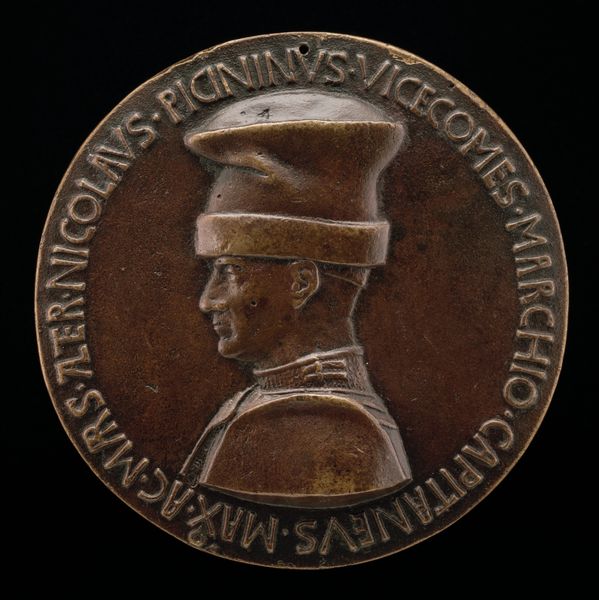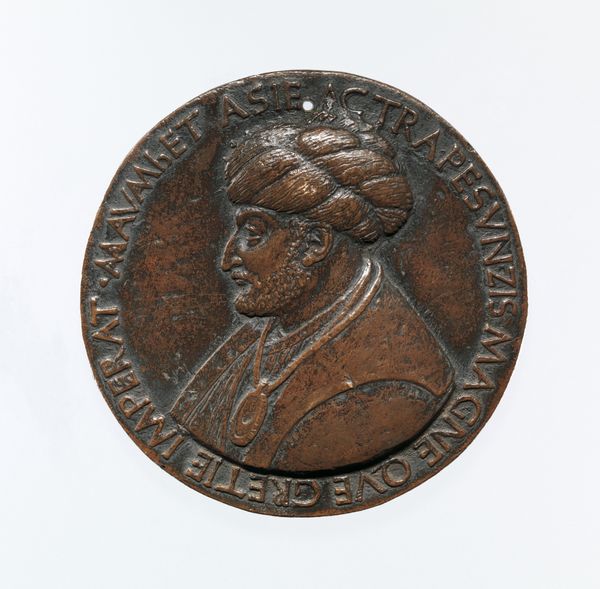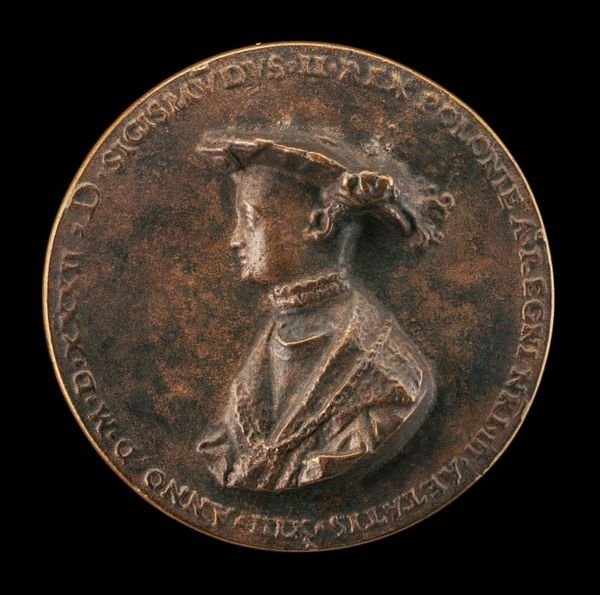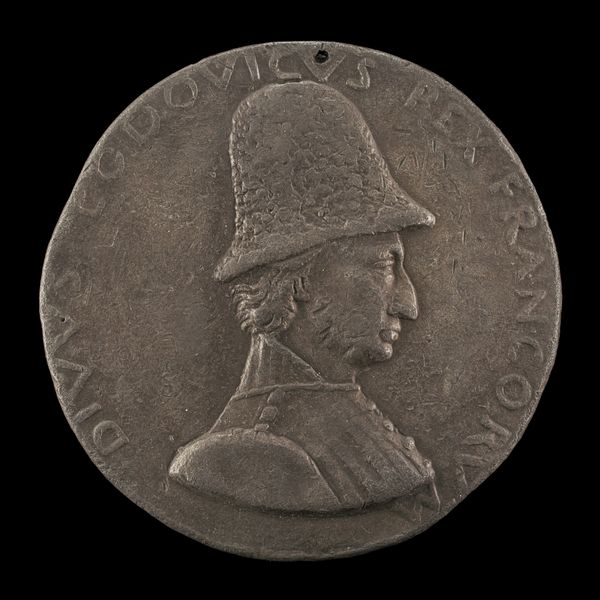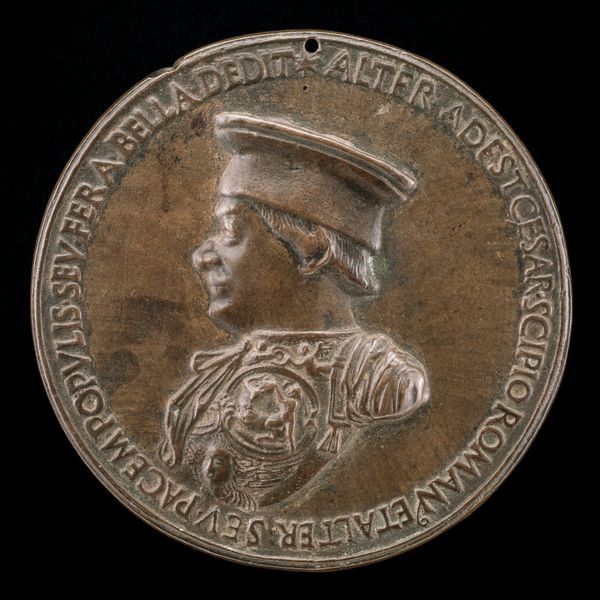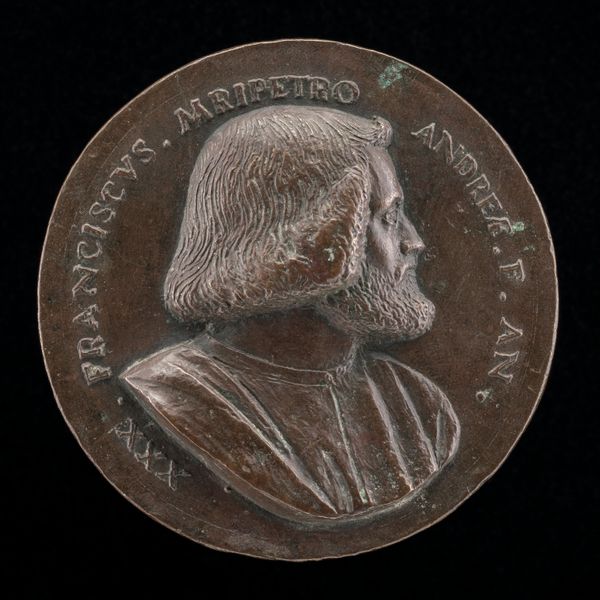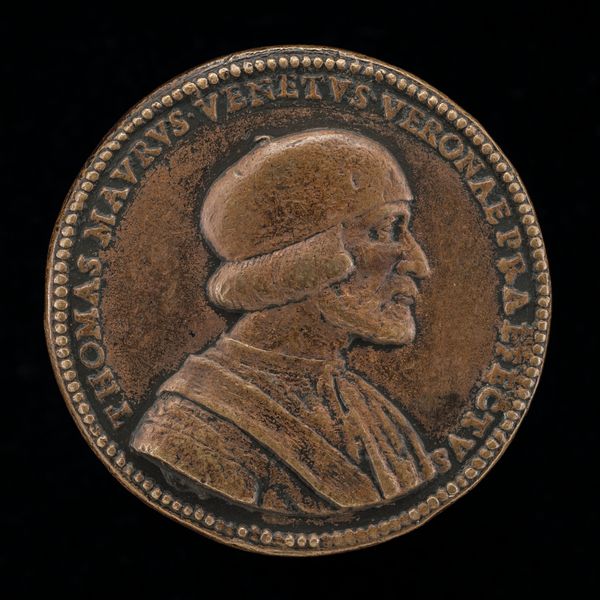![Francesco I Sforza, 1401-1466, 4th Duke of Milan 1450 [obverse] by Pisanello](/_next/image?url=https%3A%2F%2Fd2w8kbdekdi1gv.cloudfront.net%2FeyJidWNrZXQiOiAiYXJ0ZXJhLWltYWdlcy1idWNrZXQiLCAia2V5IjogImFydHdvcmtzL2QxYmNhZTZmLWEzY2QtNGYxOS04MzkzLWI4Njg4YzdhMDMzMi9kMWJjYWU2Zi1hM2NkLTRmMTktODM5My1iODY4OGM3YTAzMzJfZnVsbC5qcGciLCAiZWRpdHMiOiB7InJlc2l6ZSI6IHsid2lkdGgiOiAxOTIwLCAiaGVpZ2h0IjogMTkyMCwgImZpdCI6ICJpbnNpZGUifX19&w=3840&q=75)
Francesco I Sforza, 1401-1466, 4th Duke of Milan 1450 [obverse] c. 1441
0:00
0:00
relief, bronze, sculpture
#
portrait
#
medal
#
sculpture
#
relief
#
bronze
#
sculpture
#
italian-renaissance
Dimensions: overall (diameter): 8.67 cm (3 7/16 in.) gross weight: 274.28 gr (0.605 lb.) axis: 12:00
Copyright: National Gallery of Art: CC0 1.0
Curator: Let's turn our attention to this bronze relief: Pisanello's portrait medal of Francesco I Sforza, dating from around 1441. Editor: It strikes me as remarkably austere for Renaissance portraiture. The smooth bronze and sharp, unwavering profile evoke a sense of cool detachment. Curator: Indeed. Sforza's rise to power as Duke of Milan in 1450 was secured through military prowess and strategic alliances, and we can view the medal as a piece of political propaganda. Editor: Semiotically, every element is meticulously considered, right down to the precise lettering and the figure's elevated gaze, which reinforces his authority and status. Curator: Absolutely. Consider the power dynamics at play in the 15th century Italian courts. Portraiture served as a means of solidifying a ruler’s image. This medal speaks to a carefully crafted persona: that of a learned and powerful leader. The materiality, the very nature of bronze, a durable material, broadcasts permanence. Editor: And the controlled contours contribute to a powerful graphic quality. Pisanello masterfully exploits the limitations of the medium to create an incredibly striking, almost architectural, head and shoulders. Curator: The lack of overt ornamentation—the subtle details in the armor—contrasts with other portrayals of the era, revealing how he wanted to be remembered, how his reign was to be defined. How different might it be if he were posed in full regalia surrounded by the spoils of war? Editor: By choosing a profile view, Pisanello emphasizes linear qualities. The form becomes about the play of light across planes, distilled to essential shapes, reflecting Classical influences while heralding new approaches. Curator: The inscription encircling the figure further contextualizes Sforza. It locates him, and establishes a lineage of power while solidifying his place within the complex sociopolitical context of the Italian Renaissance. Editor: Yes, one might even see in the controlled profile a tension—the energy held taut, barely suppressed by the circular boundary. I leave feeling a sense of controlled power emanating from this understated bronze. Curator: An image of calculated restraint; and one, it seems, destined to endure through art.
Comments
No comments
Be the first to comment and join the conversation on the ultimate creative platform.
